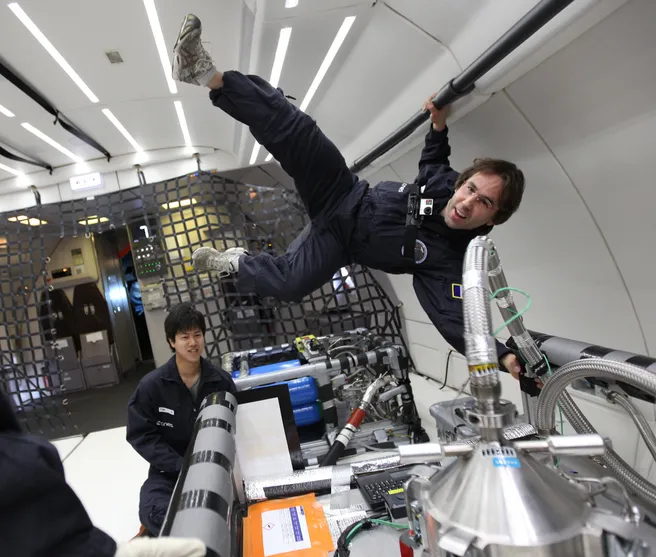Within the Seminar Lecture of our group Prof. Legros is going to talk about
Exploring the physics of fire - from ground to space (and vice versa ...)
Abstract:
The main space agencies have identified fire safety as one of the major issues that obstruct the mission to Mars. For sure, under microgravity and low characteristic forced velocities conditions, the absence of natural convection allows to dramatically expand the time scales associated with transport and combustion processes. These anticipated trends can be associated with an increase in both soot concentration and radiative emissions, especially from the soot continuum. Radiation from soot can then be a predominant mode of heat transfer involved in non-buoyant flame spread. These issues are tackled within the context of international projects, such as SAFFIRE (SpAcecraFt FIre Experiments), a series of large-scale experiments led by NASA aboard Cygnus spacecraft, or FLARE (Flammability Limits At REduced gravity), conducted by JAXA to establish new standards for fire resistance of materials potentially composing spacecraft.
The French contribution to these ongoing works is called DIAMONDS (Detection of Ignition and Mitigation Onboard for Non-Damaged Spacecraft). More specifically, DIAMONDS is a rig that enables short experiments of flame spread in parabolic flights. We will especially illustrate how fundamental research elaborated on the ground can be designed to support applied research conducted with DIAMONDS to better understand the physics of a fire spreading in microgravity. This understanding is expected to pave the way toward efficient strategies of fire mitigation in spacecraft. Conversely, the basic flow conditions generated around the non-buoyant spreading flame can be considered an ideal configuration for the fine study of fire propagation.
